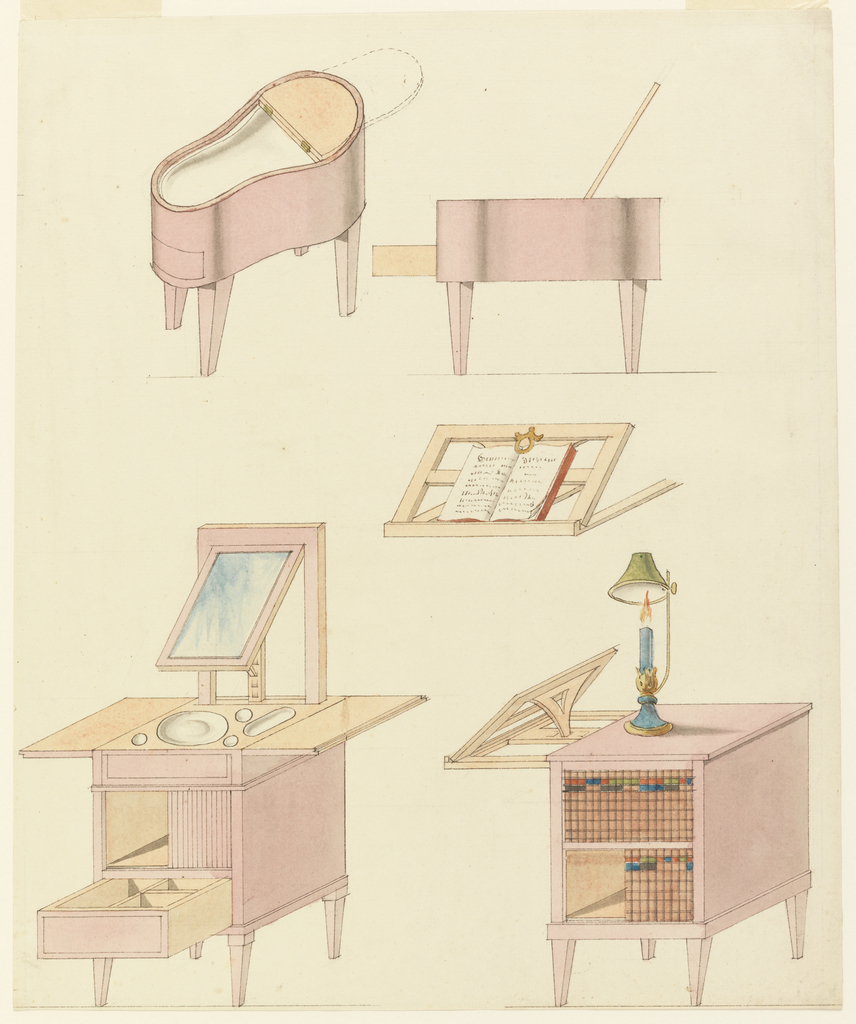The early nineteenth century marked the end of the Napoleonic Wars, which left Germany and many other countries in a state of destitution.[1] As the German middle class developed and grew wealthier due to industrialization during the succeeding decades, they demanded a new style of furniture characterized by “plain, unpretentious, and inoffensive”[2] objects. The period, which lasted from about 1815 through 1830, was known as the Biedermeier era, named after the fictitious schoolmaster and poet Gottlieb Biedermeier. Designs for Mechanical Furniture: Bidet and Reading Washstand resembles furniture from this time in their lack decorative elements. In addition, the light brown color of the furniture indicates that it was made of wood, which was the common material for furniture during this time.[3] Finally, the portability of the objects due their light and flat surfaces gives further clues that the drawing was indeed from this period.[4]
Although the title suggests two pieces of furniture, careful examination of the drawing shows three: a bidet, washstand, and reading table. The idea of furniture for gender-specific use was common in the nineteenth century. The reading table, which had the tendency to function as a place to conduct business activities, was most likely for the male. Literature reveals that bidets and washstands were primarily placed in the female’s bedroom. The bidet, washstand, and reading table in their banality characterize the Biedermeier period and most likely functioned for activities particular to the male or female.
Jane Oh is a History of Decorative Arts and Design Master's student at Parsons The New School for Design/Cooper-Hewitt, National Design Museum. She graduated from the University of California, Davis with degrees in Art History and Communication, and her focus is on contemporary art and design.
[2] Ibid.
[3] Ibid., 33.
[4] Ibid., 34.
